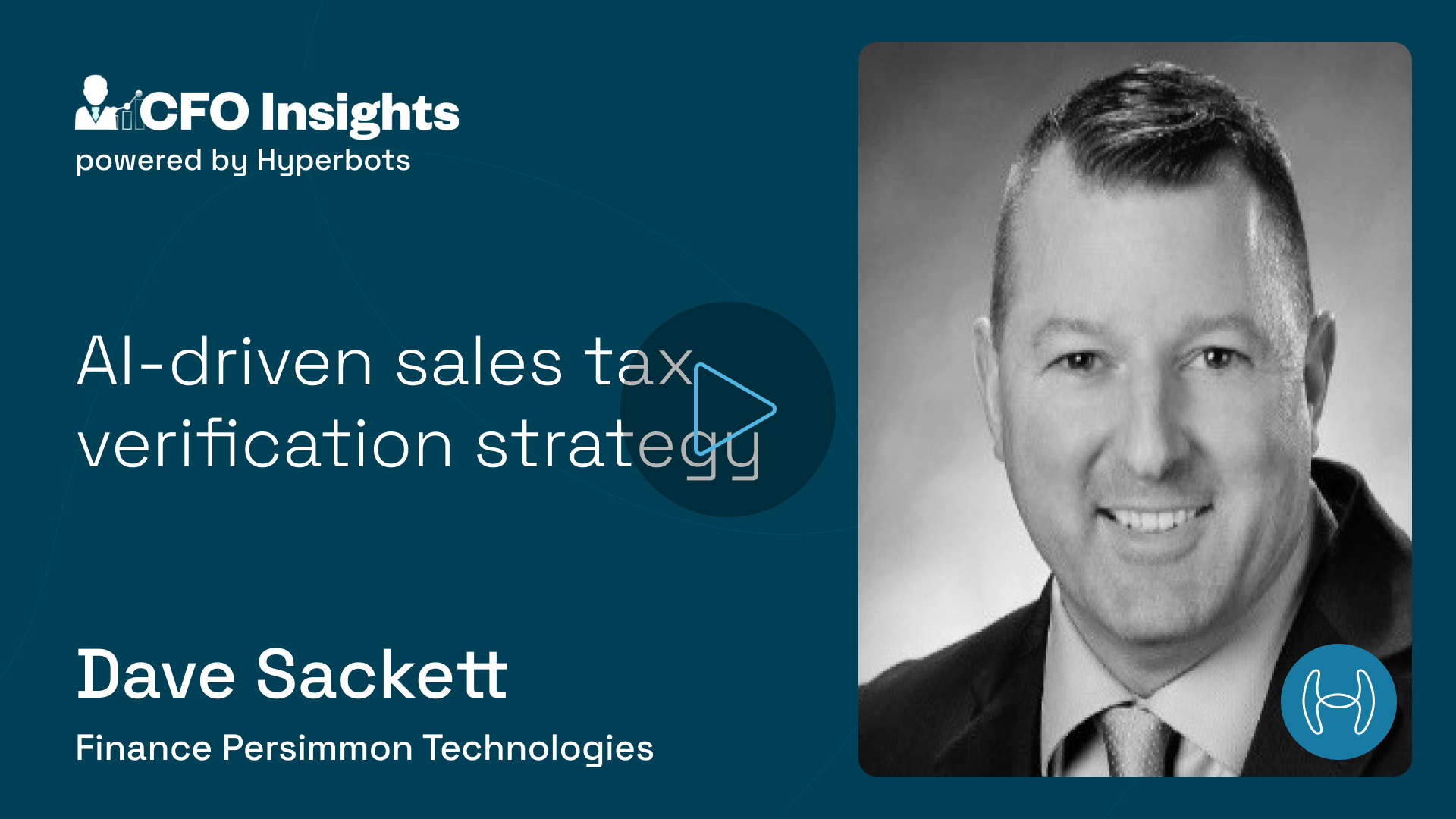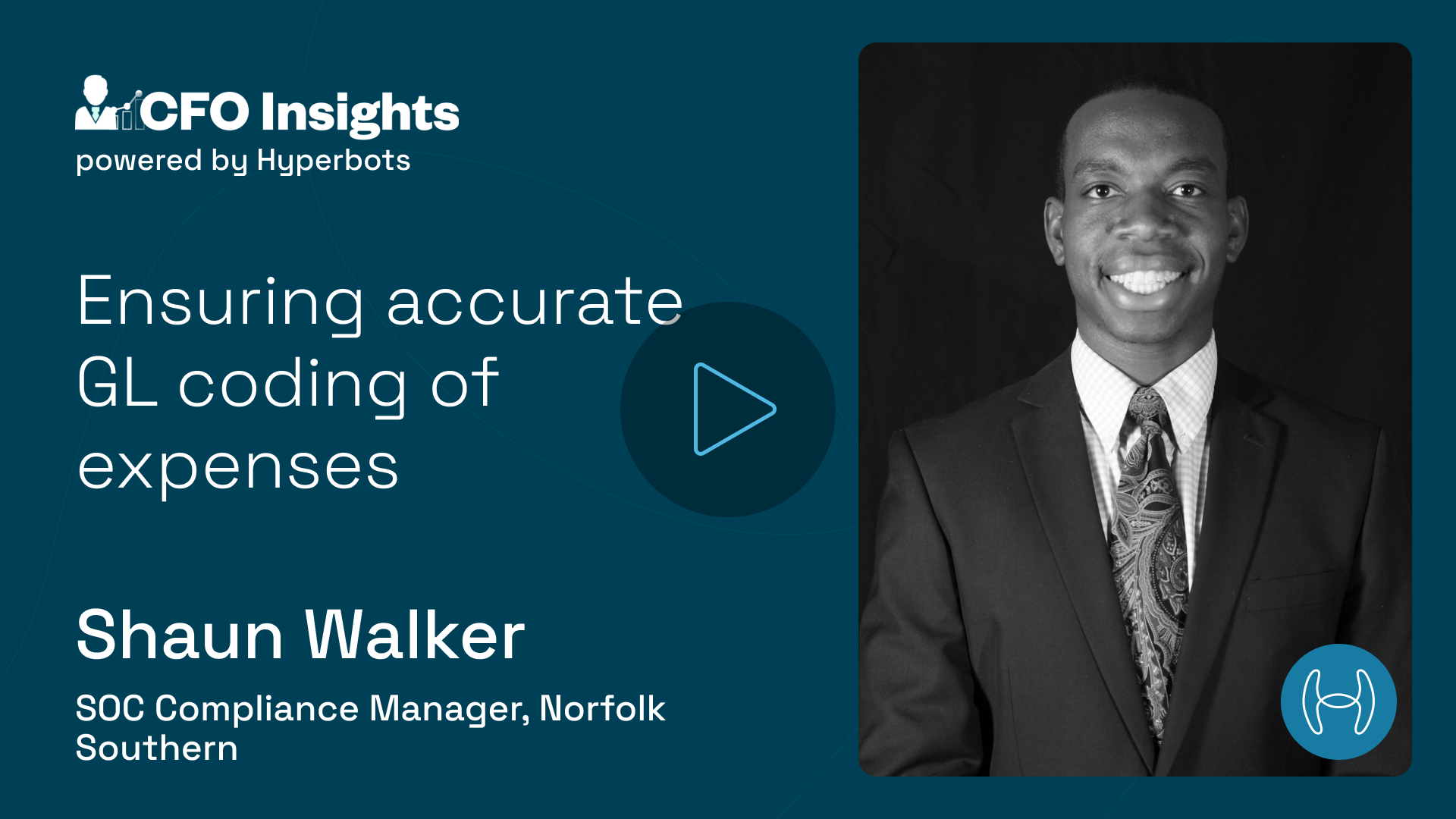-
Negotiating for better payment terms
Find out interesting insights with John Silverstein, VP, FP&A at Extreme Reach Moderated by Srishti, Digital Transformation Consultant at Hyperbots Don’t want to watch a video? Read the interview transcript below. Srishti Rajveer: Hello, everyone! My name is Srishti Rajveer, and I’m a digital transformation consultant here at Hyperbots. Today, I’m delighted to have John…
-
Exploring various types of payment terms & optimizing them with AI
Find out interesting insights with Shaun Walker, Sox compliance manager, Norfolk Southern Moderated by Srishti, Digital Transformation Consultant at Hyperbots Don’t want to watch a video? Read the interview transcript below. Srishti: Hello, everyone! My name is Srishti Rashvier, and I’m a digital transformation consultant at Hyperbots today. I’m delighted to have Shaun Walker as…
-
AI-driven sales tax verification strategy

Find out interesting insights with Dave Sackett, VP of finance at Persimmon Technologies Moderated by Emily, Digital Transformation Consultant at Hyperbots Don’t want to watch a video? Read the interview transcript below. Emily: Hi, everyone. This is Emily, and I’m a digital transformation consultant with hyperbots. Really pleased to have Dave Sackett on the call…
-
Debit/Credit entry postings differences in QuickBooks, SAP S/4HANA, and NetSuite

Find out interesting insights with Dave Sackett, VP of Finance at Persimmon Technology Moderated by Emily, Digital Transformation Consultant at Hyperbots Don’t want to watch a video? Read the interview transcript below. Emily: Hi, everyone! This is Emily, and I’m a digital transformation consultant with Hyperbots, Inc. I’m pleased to have Dave on the call…
-
Ensuring accurate GL coding of expenses

Find out interesting insights with Shaun Walker, SOC Compliance Manager, Norfolk Southern Moderated by Emily, Digital Transformation Consultant at Hyperbots Don’t want to watch a video? Read the interview transcript below. Emily: Hi, everyone. This is Emily, and I’m a digital transformation consultant at Hyperbots, Inc. I’m pleased to have Shaun again with us. He…
-
Managing and scaling the Chart of Accounts(COA) in QuickBooks online

Find out interesting insights with John Silverstein, VP of FP&A at Extreme Reach Moderated by Emily, Digital Transformation Consultant at Hyperbots Don’t want to watch a video? Read the interview transcript below. Emily: Hey, everyone, this is Emily, and I’m a digital transformation consultant at hyperbots. I’m pleased to have John Silverstein on the call…
-
Detecting anomalies and frauds through AI-based matching

Find out interesting insights with Anna Tiomina CFO & Founder, Blend2Balance. Moderated by Emily Digital Transformation Consultant at Hyperbots Don’t want to watch a video? Read the interview transcript below. Emily: Hey, everyone, this is Emily, and I am a digital transformation consultant at hyperbots today on the call with me. I’m extremely happy to…
-
ROI on AI-led automation in finance

Find out interesting insights with Anna Tiomina, CFO, &Founder, Blend2Balance Moderated by Niharika Sharma, Head of Marketing at Hyperbots. Don’t want to watch a video? Read the interview transcript below. Niharika: Hi everyone, this is Niharika and I take care of marketing at Hyprbots. Today we have with us Anna Tiomina, who’s a CFO with…
-
AI in finance and accounting: a strategic roadmap

Finance and accounting (F&A) are critical to the operational efficiency and strategic decision-making of any business. The advent of artificial intelligence (AI) presents a transformative opportunity for these functions. This article analyzes manual, analytical, and strategic activities within these functions and determines the most optimal AI adoption roadmap. 1. Nature of Activities in F&A Functions…
-
CFOs’ toolkit for adopting AI

Find out interesting insights with Anna Tiomina, CFO, & Founder Blend2Balance Moderated by Emily, Digital Transformation Consultant at Hyperbots Don’t want to watch a video? Read the interview transcript below. Emily: Hello, everyone. This is Emily, a digital transformation consultant at Hyperbot Systems, and on the call, I’m really glad to have Anna with me.…